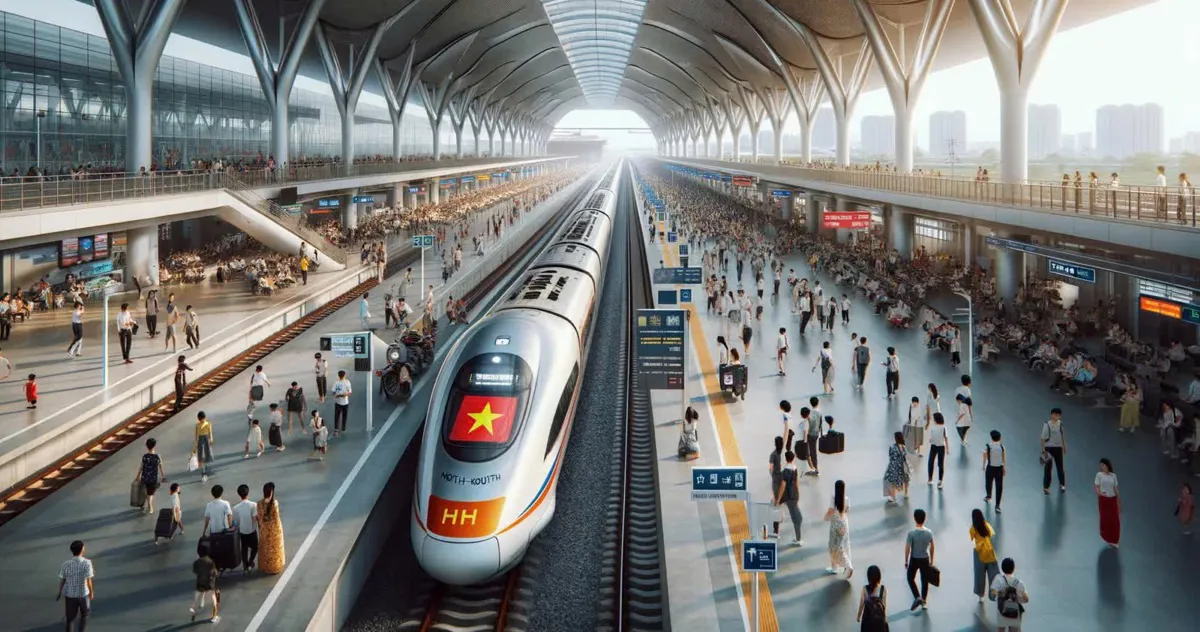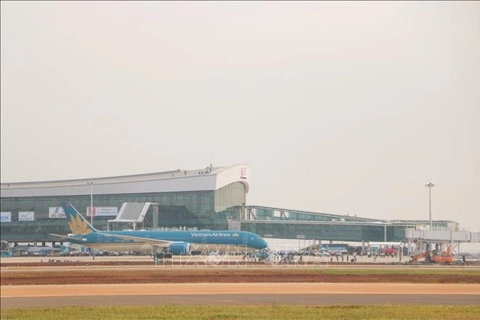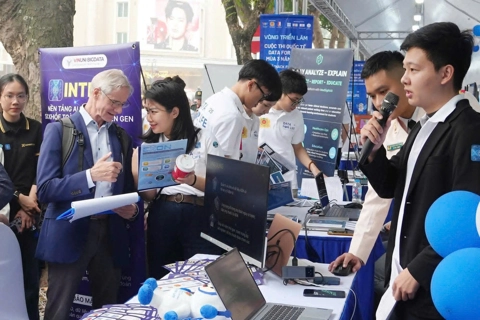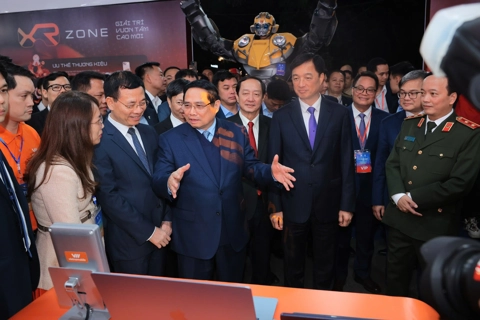Work on trans-Vietnam high-speed railway to begin in late 2026
The 1,541-kilometer North-South high-speed railway project, estimated to cost VND1.7 quadrillion (US$67.3 billion), will have a designed speed of 350 kilometers per hour.
THE HANOI TIMES — Prime Minister Pham Minh Chinh has asked the Ministry of Construction to complete all procedures to start construction of Vietnam's North-South high-speed railway by the end of 2026, one year earlier than originally planned.

Rendering of the North-South high-speed railway project. AI illustration created by VGP
Accordingly, the Ministry of Construction has been requested to submit the bidding mechanism for the project to the government this month so that the National Assembly can review it for approval in May, the Government Office quoted the prime minister as announcing last weekend.
The railway is a key part of Vietnam's long-term transportation infrastructure development strategy and will primarily carry passengers and light freight as needed.
Running from Ngoc Hoi station in Hanoi to Thu Thiem station in the southern metropolis of Ho Chi Minh City (HCMC), the railway will have 23 passenger terminals and five freight terminals.
It is one of Vietnam’s most ambitious transportation projects in this decade, which was approved for investment by the National Assembly last November.
For the Lao Cai-Hanoi-Haiphong rail line in the northern region, Prime Minister Chinh set a deadline of December this year to start construction. The prime minister noted its importance as Vietnam's first long-distance high-speed rail link with China. The Ministry of Foreign Affairs and the Ministry of Finance have been tasked to negotiate with their Chinese counterparts by May to sign a loan agreement in November. Deputy Prime Minister Ho Duc Phoc will lead talks with China to secure concessional financing.
Chinh also emphasized the priority of the Hanoi-Lang Son and Haiphong-Mong Cai railway sections to boost tourism and economic potential. He urged relevant agencies to address challenges, speed up site clearance, optimize financial mechanisms, diversify funding sources, and strengthen supervision to prevent losses and inefficiencies.
Regarding urban metro lines, Hanoi and HCMC are required to review their implementation plans and propose capital mobilization strategies for each project. The Ministry of Finance will report to the prime minister for approval of the Hanoi Station-Yen So section of Metro Line No. 3.
The Vietnam Railways Corporation will be allowed to raise its charter capital. It will work with partners to draw up plans for a railway industrial complex to support upcoming projects.
The prime minister instructed local authorities and the Vietnam Electricity Group to prepare financing and land clearance plans. Land around railway stations will be used to raise capital.
Between April and June, the ministries will draft regulations, develop staffing plans, and contract Viettel and VNPT, Vietnam's largest telecom operators, to support railway signaling and information technology systems.











